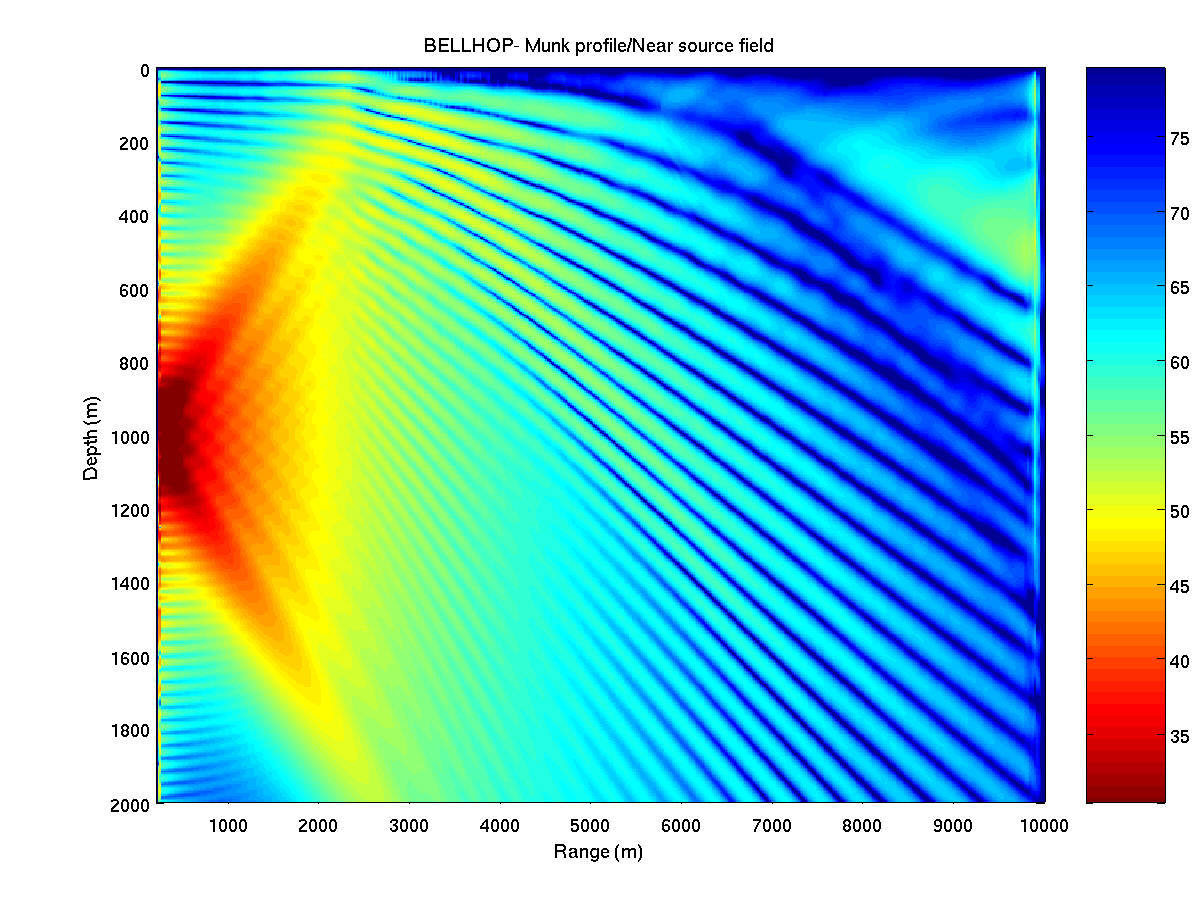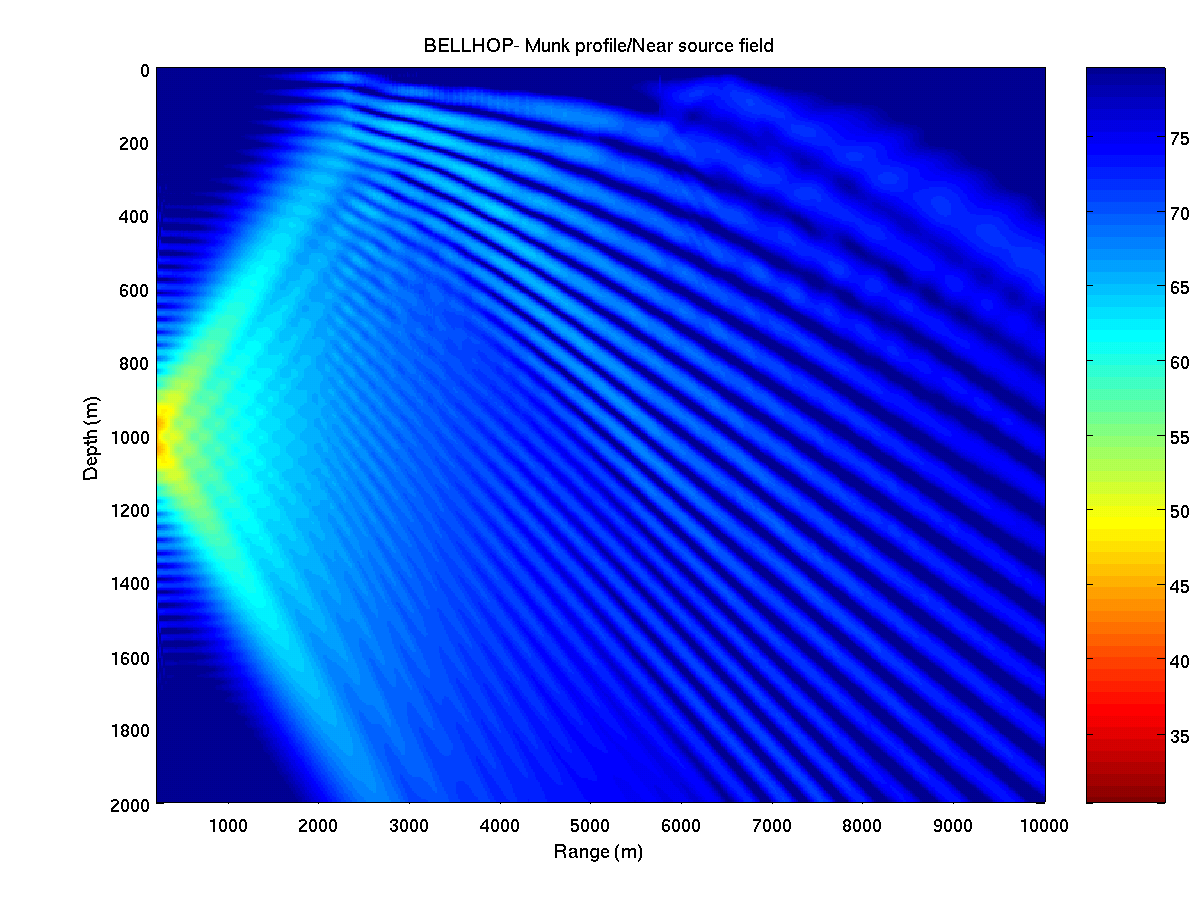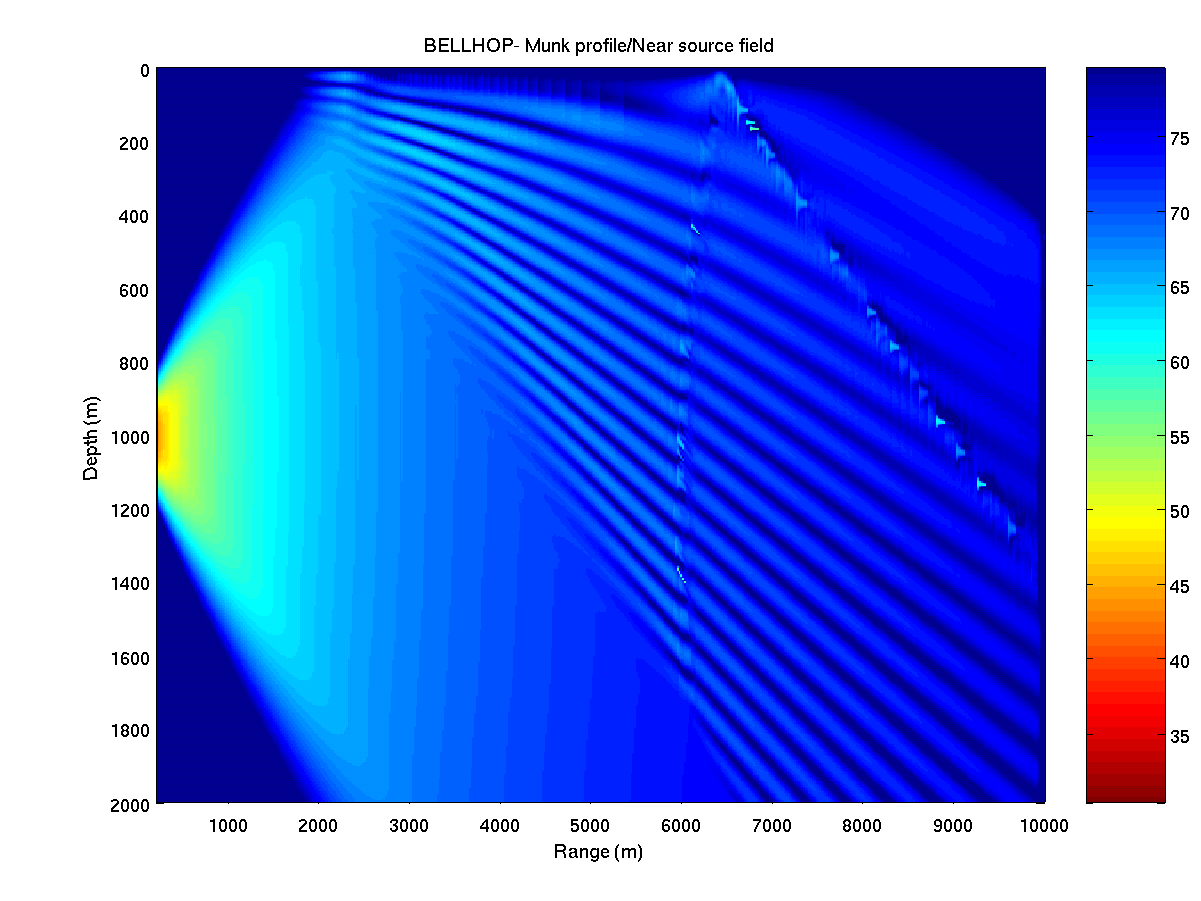Next: Pressure and pressure components Up: Examples Previous: Ray trace with a Contents
'Munk profile/Near source field'
50.0
1
'SVF'
51 0.0 5000.0
0.0 1548.52 /
200.0 1530.29 /
250.0 1526.69 /
400.0 1517.78 /
600.0 1509.49 /
800.0 1504.30 /
1000.0 1501.38 /
1200.0 1500.14 /
1400.0 1500.12 /
1600.0 1501.02 /
1800.0 1502.57 /
2000.0 1504.62 /
2200.0 1507.02 /
2400.0 1509.69 /
2600.0 1512.55 /
2800.0 1515.56 /
3000.0 1518.67 /
3200.0 1521.85 /
3400.0 1525.10 /
3600.0 1528.38 /
3800.0 1531.70 /
4000.0 1535.04 /
4200.0 1538.39 /
4400.0 1541.76 /
4600.0 1545.14 /
4800.0 1548.52 /
5000.0 1551.91 /
'A' 0.0
5000.0 1600.00 0.0 1.8 .8 /
1
1000.0 /
501
0.0 2000.0 /
501
0.2 10.0 /
'C'
201
-25.0 25.0 /
0.0 5500.0 102.0,
'MS' 1.0 100.0 0,
3 5
We can notice the inclusion of two additional lines (in fact, the beam block).
When using geometric beams, by setting OPTIONS3(1) = 'C', those lines are ignored,
but we are including them in advance in order to make automatic the transition to the other approximations.
Running Bellhop with nearsource.env allows us to obtain Fig.8.
As shown by the figure the acoustic field is strictly confined between the propagating rays and the interference pattern of acoustic pressure becomes visible only at a large distance from the source.
Similar results will be obtained using Gaussian beam bundles,
when we change OPTIONS3(1) = 'C' to OPTIONS3(1:2) = 'CB' in nearsource.env.
A completely different pattern is revealed when we switch on the calculation of beams influence using Cartesian coordinates, by setting OPTIONS3(1:2) = 'CC' and OPTIONS4(1:2) = 'MS'. As shown in Fig.9 the acoustic field reveals an accurate pattern of interference, which now spans over the entire watercolumn. A similar result, although with minor differences in amplitude, can be obtained using ray centered coordinates (OPTIONS3(1:2) = 'CR', see Fig.10). However, the structure of the pattern depends on the type of beam curvature. For instance, setting OPTIONS4(1:2) = 'CZ' will lead us to Fig.11.
 |
 |
 |
Orlando Camargo Rodríguez 2008-06-16